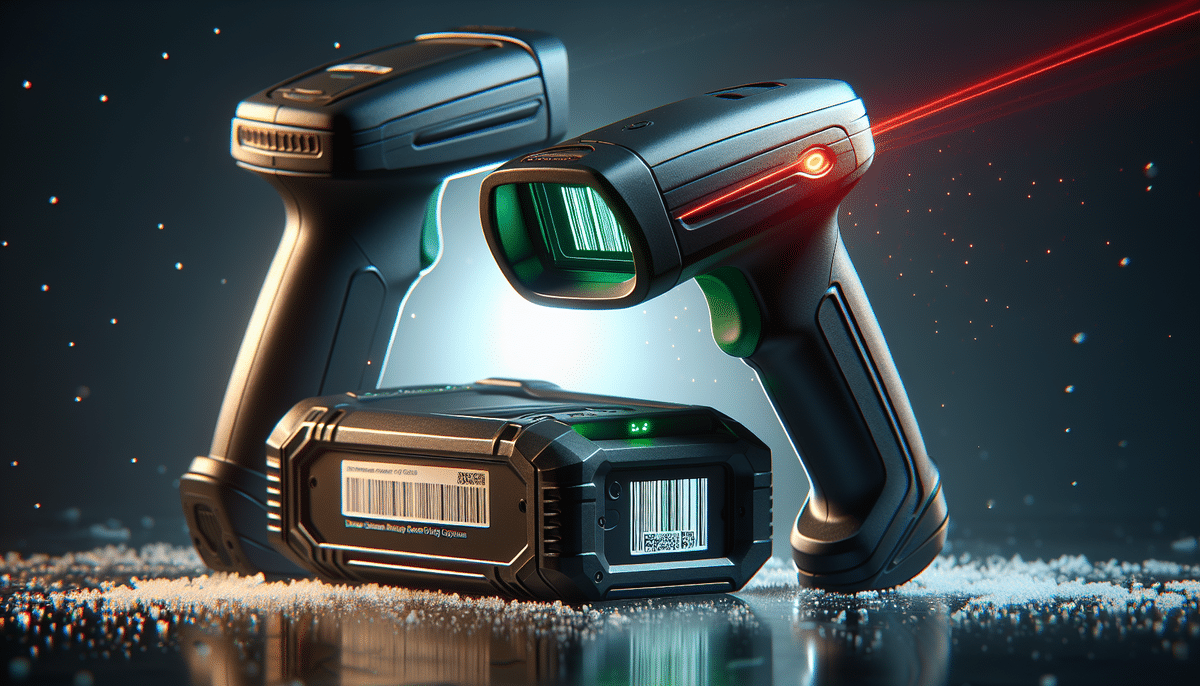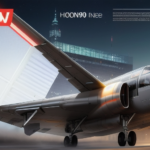Introduction to Barcode Scanners
Barcode scanners are indispensable tools in a wide range of industries, including retail, healthcare, logistics, and manufacturing. These devices use optical scanners to read barcodes, which encode important product information. By facilitating quick and accurate data entry, barcode scanners significantly enhance operational efficiency and accuracy.
Modern barcode scanners come in various forms, including handheld, fixed-mount, and wireless models, each designed to meet specific business needs. Handheld scanners offer flexibility, making them suitable for tasks such as inventory management and point-of-sale operations. Fixed-mount scanners, on the other hand, are ideal for high-volume environments like warehouses, where they can handle continuous scanning without manual intervention. Wireless scanners provide the added benefit of mobility, allowing employees to perform scanning tasks without being tethered to a workstation.
The Importance of Barcode Scanners in Modern Businesses
Implementing barcode scanners in business operations delivers numerous advantages, including increased efficiency, reduced errors, and enhanced data accuracy. According to a GS1 report, businesses utilizing barcode scanning can achieve a 20-30% increase in operational efficiency.
Barcode scanners streamline processes such as inventory tracking, asset management, and transaction processing. This not only reduces labor costs but also minimizes the risk of human error, ensuring that data is consistently accurate. In retail settings, accurate inventory data ensures that products are available for customers, boosting satisfaction and loyalty.
Furthermore, integrating barcode data with inventory management systems allows businesses to perform advanced analytics. These insights can inform strategies related to sales trends, inventory turnover, and supply chain performance, enabling more informed decision-making and strategic planning.
Comparing the WoneNice USB Laser Barcode Scanner and Honeywell Xenon 1900g
Key Features
WoneNice USB Laser Barcode Scanner is known for its reliable performance and affordability. Key features include:
- Plug-and-Play Setup: Easy installation via USB, eliminating the need for additional software.
- Wide Barcode Compatibility: Supports various barcode types, including EAN-8, EAN-13, UPC-A, UPC-E, Code39, Code93, Code128, Codabar, and Matrix 2 of 5.
- Extended Scanning Range: Capable of reading barcodes from up to 10 inches away, making it suitable for large or hard-to-reach items.
- Durable and Ergonomic Design: Lightweight and compact, designed for extended use with a comfortable grip.
The WoneNice scanner is an excellent choice for businesses seeking an affordable solution without compromising on essential performance features. For more detailed specifications, visit the WoneNice product page.
Honeywell Xenon 1900g is a professional-grade barcode scanner renowned for its advanced imaging technology and robust build. Key features include:
- High-Speed Scanning: Capable of up to 450 scans per second, ensuring swift data capture.
- Versatile Barcode Support: Reads both 1D and 2D barcodes, including QR codes and PDF417.
- Advanced Image Processing: Enhances readability of damaged or poorly printed barcodes.
- Durable Construction: Rubberized exterior withstands drops from up to 6 feet and is water and dust resistant.
- Flexible Scanning Modes: Omnidirectional, single-line, and PDF417 scanning modes for diverse applications.
Designed for high-demand environments, the Honeywell Xenon 1900g offers superior performance and durability, making it suitable for industries like healthcare and logistics. More information can be found on the Honeywell official website.
Design and Build Quality
When comparing the design and build quality of both scanners:
- WoneNice USB Laser Barcode Scanner: Features a lightweight, ergonomic design with a flexible stand, enhancing comfort during prolonged use. Its shock-resistant build ensures durability in everyday operations.
- Honeywell Xenon 1900g: Boasts a rugged, rubberized exterior capable of withstanding drops and is rated for water and dust resistance. Its reinforced body is ideal for harsh working environments.
Performance Comparison
Performance metrics highlight significant differences between the two scanners:
- WoneNice: Scans up to 200 barcodes per second with a range of up to 10 inches. Suitable for standard retail and inventory applications.
- Honeywell Xenon 1900g: Offers up to 450 scans per second and a scanning range of up to 29 inches. Capable of reading both 1D and 2D barcodes, including QR codes, making it versatile for various industries.
Speed and Accuracy
The Honeywell Xenon 1900g outperforms the WoneNice scanner in both speed and accuracy:
- Honeywell Xenon 1900g: Performs 450 scans per second with high accuracy, even for low-quality barcodes.
- WoneNice: Capable of 200 scans per second with reliable accuracy for standard barcode quality.
For businesses requiring high-speed scanning and the capability to read damaged or complex barcodes, the Honeywell Xenon 1900g is superior.
Ease of Use
Both scanners are designed for user-friendliness, but each offers different features:
- WoneNice USB Laser Barcode Scanner: Features a plug-and-play setup and a flexible stand, allowing for hands-free scanning.
- Honeywell Xenon 1900g: Equipped with a one-button trigger and customizable settings, enabling quick adaptation to different scanning needs.
While both models require minimal training, the Honeywell Xenon 1900g offers more advanced customization options to accommodate varied applications.
Durability and Reliability
In terms of durability and reliability:
- WoneNice: Durable enough for everyday use with a shock-resistant design, but not as rugged as the Honeywell model.
- Honeywell Xenon 1900g: Highly durable with a rubberized, reinforced body that resists drops, water, and dust, ensuring longevity in demanding environments.
Pricing Comparison
Pricing is a critical factor for many businesses when selecting a barcode scanner:
- WoneNice USB Laser Barcode Scanner: Budget-friendly, making it an excellent choice for small businesses and individuals.
- Honeywell Xenon 1900g: Higher price point reflects its advanced features and durability, offering long-term value for large enterprises and high-demand applications.
Businesses must weigh initial costs against long-term benefits and operational requirements when choosing between these scanners.
Pros and Cons
WoneNice USB Laser Barcode Scanner
Pros:
- Affordable pricing
- Plug-and-play setup
- Flexible stand for hands-free scanning
Cons:
- Less durable compared to professional-grade scanners
- Lower scanning speed and shorter range
Honeywell Xenon 1900g
Pros:
- High-speed and high-accuracy scanning
- Robust and rugged design
- Water and dust resistant
- Supports a wide range of barcode types
Cons:
- Higher cost
- Heavier and less ergonomic
- May offer more features than necessary for small-scale operations
Choosing the Right Barcode Scanner for Your Business
The optimal choice between the WoneNice USB Laser Barcode Scanner and the Honeywell Xenon 1900g depends on your specific business requirements:
- WoneNice: Ideal for small to medium-sized businesses seeking a cost-effective, reliable scanner for standard applications.
- Honeywell Xenon 1900g: Best suited for large enterprises or businesses with high-volume scanning needs and environments that demand durable, high-performance equipment.
Conclusion: Enhancing Operational Efficiency with the Right Barcode Scanner
Both the WoneNice USB Laser Barcode Scanner and the Honeywell Xenon 1900g offer distinct advantages tailored to different business needs. The WoneNice scanner provides an affordable, user-friendly solution for businesses with standard scanning requirements. In contrast, the Honeywell Xenon 1900g delivers superior performance, durability, and versatility, making it a valuable investment for organizations with more demanding operations.
When selecting a barcode scanner, consider factors such as scanning volume, barcode types, environmental conditions, and budget to determine which model aligns best with your business objectives. Investing in the right barcode scanner can significantly enhance operational efficiency, accuracy, and overall productivity.






















